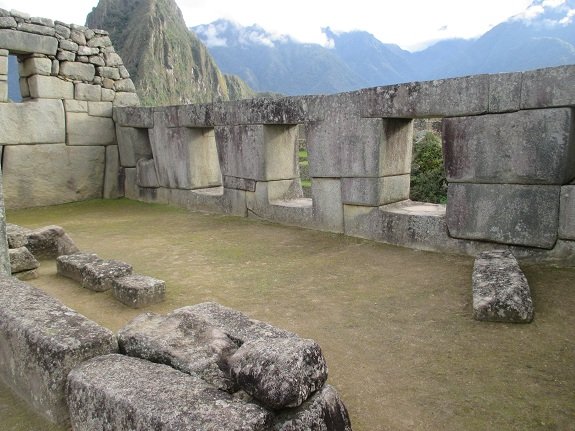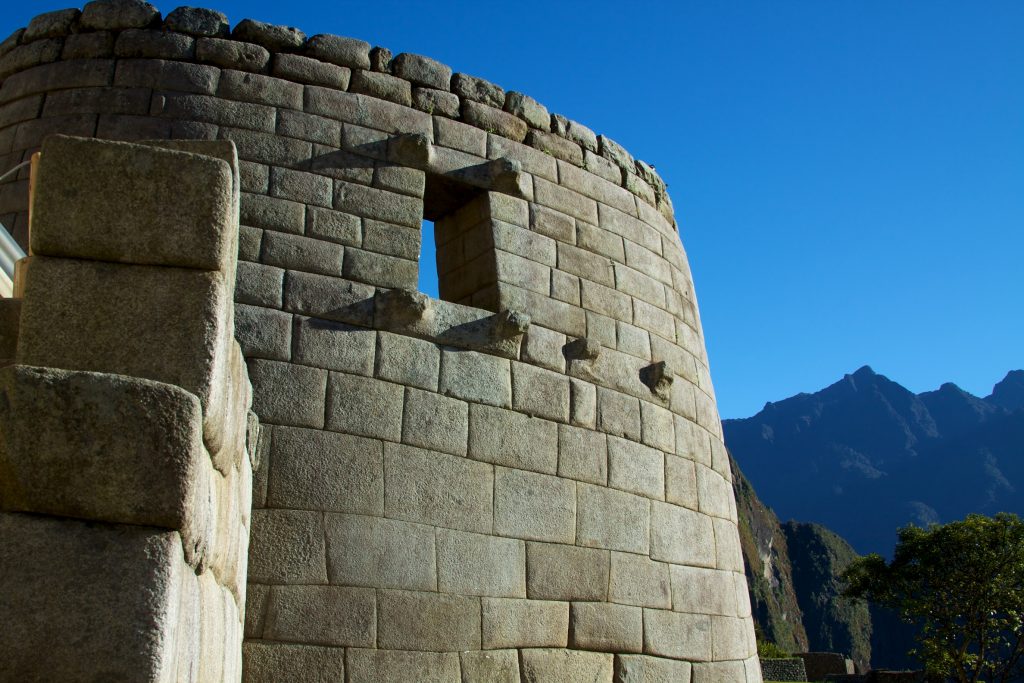Macchu Picchu, A True Megalithic Enigma
Table of Contents

Declared a Peruvian Historic Sanctuary in 1981 and a UNESCO World Heritage Site in 1983, Macchu Picchu is a true megalithic enigma that still puzzles the archaeologists.
It is located on the Eastern Cordillera in the south of Peru, on a 2,430-metre (7,970 ft) mountain ridge in the Cusco Region, above the Sacred Valley of the Inca, which is 80 kilometers (50 mi) northwest of Cuzco.
The Urubamba River flows past it, cutting through the Cordillera and creating a canyon with a tropical mountain climate.
Its three primary structures are the Intihuatana Stone, the Temple of the Sun, and the Temple of the Three Windows.
The lost city is universally known both for its imposing ruins, and for the impressive view of the underlying Urubamba valley, located about 400 meters down.
It is part of the UNESCO World Heritage Sites, elected in 2007 as one of the seven wonders of the modern world, and it is the third-largest archaeological site in the world.
Although archaeologists believe it was built as an estate of the emperor Pachacuti, evidence suggests it’s highly possible that the Inca found pre-existing buildings at the site, and they made renovations and new structures.
As a matter of fact, distinct styles can be clearly recognized when looking at the features and craftsmanship of the buildings: one pertaining to the Inca, raw, with little stones roughly held together, and two previous ones, sometimes used as a foundation by the Inca to build other structures.
In fact, the megalithic enigma of Macchu Picchu begins from the clear different styles of construction between the older and the newer layers of its structures.
Megalithic Temple of the Three Windows
This temple stands as one of the best evidence of the two different styles that can be seen at Macchu Picchu.
This is because the Inca tried to build a replica of the original megalithic temple.
Since they were unable to build in a true megalithic style, their temple is composed of small stones without the perfect joining technique.

The Inca style of construction:


It’s evident how the Inca used smaller, roughly cut stones when compared to most of the older buildings.



The two different styles of the “three windows” complexes leave no further doubts about the evident diversity.
However, without providing a clear explanation or logical reason behind this difference, archaeologists believe that all of it was built by the same culture around 1450 only to be abandoned a century later.
The crystal clear difference between the precisely cut megalithic blocks placed together without mortar that form the megalithic walls, and the archaic architectural style that can be seen on top of them, as well as in other buildings, serves as an indicator of the fact that they were not built by the same civilization.
The same architectural differences can also be easily spotted at Ollantaytambo and Sacsayhuaman.
The Temple Of The Sun
The Temple of the Sun sits on top of a large rocky mountain, as part of the Macchu Picchu archaeological site. It’s semi-circular in shape, made of granite stones, with a large door and two windows, one facing north and another facing east.


The architecture consists of meticulously carved stones, polished smooth, and then fit tightly together with maximum precision.
The structure itself mainly serves as a protection for the slab of rock contained in it, which was used as an astronomical observer.
In fact, priests used the Temple of the Sun to view the summer and winter solstices from the two windows in the temple. The windows were strategically placed on the north and east sides, and modern scholars theorized that they may have been able to measure the stars and solstices.
The Enigmatic Intihuatana Stone

The Intihuatana of Machu Picchu was carved directly into the bedrock of the mountain’s summit area. It is characterized by complex surfaces, planes, and angles whose purpose at this time is unknown.
Incomplete descriptions of its purpose by the Inca in their chronicles only add to its mysterious existence.
Archeological explanations which are not currently mainstream assert that the Inca did not construct Inti Watana but rather found it, along with other mysterious structures pre-existing at Macchu Picchu.
This implies a problematic consideration, that the Inti Watana’s construction was done by an as-yet-unknown, allegedly advanced earlier civilization.
Current archeological thought has no rigorous explanation as to whom this earlier culture could have been.

Possibly used as a sundial, it was aligned with the sun’s position during the winter solstice. The Inca believed the stone held the sun in its place along its annual path in the sky. At midday on the equinoxes, the sun stands almost above the pillar, casting no shadow at all. On June 21, the stone is casting the longest shadow on its southern side, and on December 21, a much shorter one on its northern side.
The Main Temple of Macchu Picchu
The Main Temple at Macchu Picchu is an impressive rectangular-shaped building with a base made up of enormous megalithic blocks that supports more regular-sized and perfectly cut stone. During Inca times the temple had colorful mantles.

The several earthquakes that struck Machu Picchu over time could only shift the position of the stones a little bit, as the megalithic walls of Macchu Picchu are perfectly engineered to be anti-seismic.
Mother Earth Temple
The Temple of the Dead or Mother Earth is located at the lower level in a semi-circular drum, as it is in fact a cave. The upper portion of the temple serves as a base for the Sun Temple.
Along with the Intihuatana stone, this Temple carved directly into the side of the rock is one of the most enigmatic structures, and different from the overall architectural style of the Inca.
Its features are unlike any other structure, as some of the stones on the side seem to have been melted to get an extremely bent shape.


